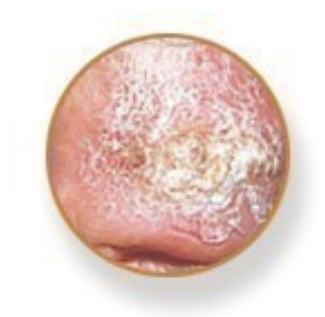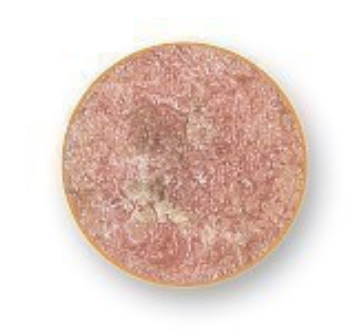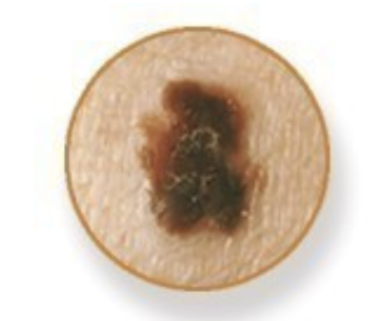The weather is warming up and summer is on it’s way! After months of pandemic-related isolation, many people will venture out and enjoy more outdoor activities. While getting fresh air and exercise is a great way to improve and maintain your health, there is one thing about the summer sun that is not so great: increased risk of skin cancer.
Since May is Skin Cancer Awareness Month, Travis Shaw, MD encourages everyone to be aware of the risks and signs of skin cancer, and to take steps to protect themselves.
Did you know:
Skin cancer is the most common type of cancer in the United States. In fact, more skin cancers are diagnosed in the United States every year than all other cancers combined.
Most skin cancers are non-melanoma types, which usually respond well to treatment and rarely spread to other parts of the body.
Breakdown of the types of skin cancers:
Basal cell carcinoma (BCC)
This is the most common type of skin cancer.

- BCC frequently develops in people who have fair skin. People who have skin of color also get this skin cancer.
- BCCs often look like a flesh-colored round growth, pearl-like bump, or a pinkish patch of skin.
- BCCs usually develop after years of frequent sun exposure or indoor tanning.
- BCCs are common on the head, neck, and arms; however, they can form anywhere on the body, including the chest, abdomen, and legs.
- Early diagnosis and treatment for BCC are important. BCC can grow deep. Allowed to grow, it can penetrate the nerves and bones, causing damage and disfigurement.
Squamous cell carcinoma (SCC)
The second most common type of skin cancer.

- Often looks like a red firm bump, scaly patch, or a sore that heals and then re-opens. People who have light skin are most likely to develop SCC. This skin cancer also develops in people who have darker skin.
- SCC often looks like a red firm bump, scaly patch, or a sore that heals and then re-opens.
- SCC tends to form on skin that gets frequent sun exposure, such as the rim of the ear, face, neck, arms, chest, and back.
- Early diagnosis and treatment can prevent SCC from growing deep and spreading to other areas of the body causing damage and disfigurement.
Melanoma
The deadliest form of skin cancer.

- Melanoma is often called “the most serious skin cancer” because of it’s tendency to spread.
- Melanoma can develop within a mole that you already have on your skin or appear suddenly as a new dark spot on the skin that looks different from the rest.
- Early diagnosis and treatment are crucial.
- Knowing the ABCDE warning signs of melanoma can help you find an early melanoma.
Actinic keratoses (AKs)
These dry, scaly patches or spots are precancerous growths caused by too much sun.
- People who get AKs usually have fair skin.
- AKs usually form on the skin that gets lots of sun exposure, such as the head, neck, hands, and forearms.
- An AK isn’t skin cancer but is a precancerous skin growth that can turn into a common type of skin cancer, squamous cell carcinoma.
- Because an AK can turn into a type of skin cancer, treatment is important.
Risks for Skin Cancer
Anyone can get skin cancer, but several factors can increase your risk of getting all types of skin cancer, including:
- Family history
- Unusual moles
- Exposure to sunlight
- Use of a tanning bed
- Sun sensitivity (burning easily or difficulty tanning)
- Natural blond or red hair color
- Weakened immune system
- Frequent sunburns
- The use of certain medications, such as steroids and BRAF inhibitors
- Previous treatment with radiation therapy
- Infection with the human papillomavirus (HPV)
What to Look For
Warning signs for all types of skin cancers include changes in the size, shape, or color of a mole or other skin lesion, the appearance of a new growth on the skin, or a sore that does not heal.
Squamous cell carcinoma often appears as a lump with a rough surface or a flat, reddish patch. Basal cell carcinoma can appear as a flat growth, or a small shiny raised area that is pink or red and may bleed easily.
A melanoma may be indicated if a mole is asymmetrical, has an irregular border, is varied in color, is greater than 6mm in diameter, or is changing in size, shape, color, or texture.
Skin Cancer Prevention
While some skin cancer risk factors are beyond the individual’s control, according to data from the American Cancer Society, “many of the more than 5 million skin cancer cases that are diagnosed annually could be prevented by protecting skin from excessive sun exposure and not using indoor tanning devices.”
To guard against skin cancer, use sunscreen with an SPF of 30 or higher, limit exposure to the sun between the hours of 10 a.m. and 4 p.m., wear sun-protective clothing and sunglasses, and examine the skin regularly for any abnormal growths.
Additional information about some of our favorite SPF’s
Our ZO Skin Health Sunscreens offer “Triple Spectrum Protection” with antioxidants & anti-inflammatory benefits that others may not. ALL ZO sunscreens offer protection against UVA, UVB, HEV and IR-A.
- Sunscreen w/Primer (SPF 30, has a tint) – Physical sunscreen, no chemicals, also good for post-procedure. Built in primer works well w/make-up.
- Broad Spectrum (SPF 50) – Physical sunscreen, no chemicals, also good for post-procedure.
- Smart Tone (SPF 50, has a slight tint) – Chemical sunscreen, is a melanin inhibitor. Great for melasma and pigmented patients.
- Daily Sheer (SPF 50) – Chemical sunscreen.


